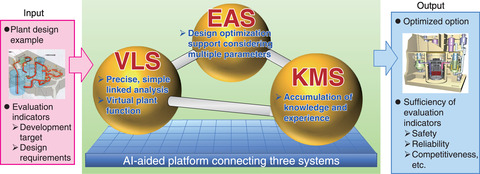
Fig.7-1 Advanced integrated design evaluation method (Advanced Reactor Knowledge- and AI-aided Design Integration Approach through the whole plant lifecycle; ARKADIA)
Fast reactor and related nuclear fuel cycles offer a promising sustainable energy supply to meet the global energy demand while protecting the environment. Fast reactors can potentially supply energy for over 1000 years by using uranium resources more effectively than traditional nuclear energy systems. Further, they can significantly reduce the exothermic heat and radiotoxicity of vitrified bodies sent to geological disposal by transmuting the minor actinides (MAs) that have a long half-life.
The R&D activities for fast reactors for the next decade were specified in the Strategic Roadmap presented by the National Inter-Ministerial Council for Nuclear Power in December 2018. According to this roadmap, back-end actions related to the reprocessing/recycling of fast reactor technology are required to establish the significance of diversifying fast reactors. Moreover, international competitiveness should be maintained via continuing R&D in the fields of nuclear power, human resource development, and research base while introducing cutting-edge technology domestically and internationally. Therefore, JAEA formulated an R&D policy in accordance with the Strategic Roadmap; the Sector of Fast Reactor and Advanced Reactor R&D (SEFARD) is now implementing an advanced integrated design evaluation method incorporating cutting-edge technologies in Japan and overseas, safety improvement technology, technology to reduce the volume and toxicity of radioactive waste, cost-effective fast reactor technology, fuel cycle technology (such as fuel fabrication and reprocessing), and the development/standardization of safety criteria, codes, and standards. The advanced integrated design evaluation method is summarized in Fig.7-1 and comprises three systems for fast reactor R&D, including the knowledge management system (KMS), the virtual plant life system (VLS), and the enhanced and AI-aided optimization system (EAS), that are integrated by an AI-aided platform to provide optimized design options by evaluating design indicators. In this chapter, some achievements from the latest R&D efforts carried out by JAEA in this area are introduced.
An extraction chromatography method using neutrons has been developed to observe nuclides adsorbed inside the column (Topic 7-1). A neutron's energy was first calculated using its flight time from the pulse source to the detector in the proposed neutron imaging technology. The adsorption band formed inside the column was then visualized by identifying the spatial distribution and nuclide type using the decrease in the number of neutrons after passing through the column and their energy, respectively.
The ratio of the neutron adsorption reaction rate in control rods to that in peripheral fuels was then investigated to reduce the rod calculation errors for large cores (Topic 7-2), and reference solutions were calculated using the Monte Carlo method. This ratio is the main factor used in the reaction rate ratio preservation method and is multiplied by nuclear reaction data. Furthermore, the error evaluation method was improved by improving multiple fuel areas and boundary conditions in the system model for the fuel rods and peripheral fuels.
The physical properties (e.g., density and heat capacity) of melted control rods were measured in collaboration with other research institutes at a wide temperature range encompassing solid and liquid phases to evaluate the influence of temperature on composition ratio and thus improve models of the melting and transport behavior of the control rods and stainless steel eutectic reaction. Our results could aid efforts to reduce the exothermic heat of core melt materials during a core disruptive accident (CDA) in a fast reactor (Topic 7-3).
The swelling properties of core materials should be well understood to develop irradiation-resistant, long-lasting fuel cladding. Therefore, we quantified the vacancy diffusivity and concentration of an empty rectangular lattice of modified stainless steel by observing the void denuded zone width after irradiation and quantifying the relationship between the swelling and diffusivity of an empty rectangular lattice (Topic 7-4).
Finally, we developed a recovery process using a solvent extraction method that has been used in reprocessing plants worldwide to improve the recovery of trivalent MAs (MAs (Ⅲ)). To do so, we developed an extraction chromatography separation flow-sheet that utilizes the difference in behavior between light and heavy rare earth elements. Using the developed method, MAs (Ⅲ) were recovered with high purity in a nitric acid solution (Topic 7-5).